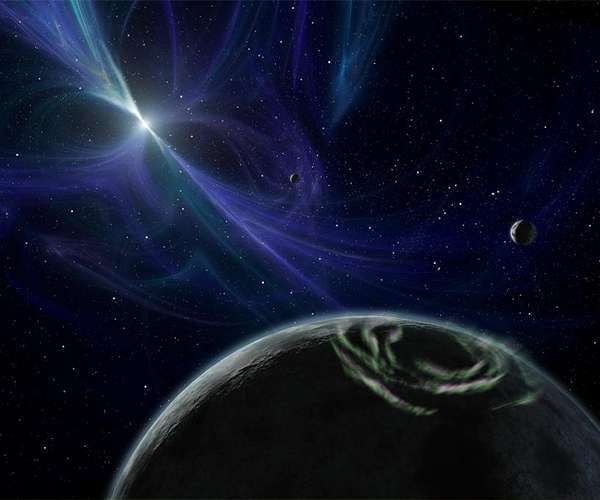25.06.2024

The small footprint and dim light of white dwarfs, remnants of stars that have burned through their fuel, may make excellent backdrops for studying planets with enough water to harbor life.
The challenge lies in detecting the shadow of a planet against a former star that has shrunk significantly and ensuring that it has maintained its water oceans for billions of years, even after enduring the star's explosive final stages. A new study of the dynamics of white dwarf systems suggests that, in theory, some watery planets may indeed await discovery and closer scrutiny.
Astronomers examining exoplanets for potential signs of life gather data while these planets transit their star, using the light passing through the planets' atmosphere to identify elements and molecules.
A large, active star can be difficult to observe. Therefore, finding a planet orbiting a smaller, more stable white dwarf is advantageous.
White dwarfs are so small and so featureless, that if a terrestrial planet transited in front of them, you could actually do a much better job of characterizing its atmosphere, says University of Wisconsin-Madison astronomy professor Juliette Becker, lead author of the study, which is under review at AAS Journals and was presented in Madison at the 244th meeting of the American AstronomicalSociety. The planet's atmosphere would have a much larger, clearer signal because a larger fraction of the light you're seeing is passing through exactly what you want to study.
The first major hurdle for such a planet is surviving the last days of a small- to medium-sized star, which can be quite destructive.
When stars like our sun run out of fuel, they expand significantly.
There are two pulses, basically, during which the star grows to 100 times its normal radius, Becker says. While it does that - we can call this part Destruction Phase No. 1 - it will engulf any planets that are within that radius.
Even if a water-harboring planet escapes being engulfed, it still faces challenges. The star's growth is followed by mass loss and a significant increase in brightness.
The fact that the star gets so much brighter means that all planets in the system, even ones that used to be cold in the outer solar system, will suddenly have their surface temperatures increase drastically, Becker says. That can evaporate their oceans and cost them a lot of water.
An Earth-like planet needs to be at least roughly 5 to 6 astronomical units away from its dying star to retain enough water through these phases, according to the study.
However, after the star shrinks and cools, another challenge arises. Over the course of a billion or more years, the once-violent star will become very small and cold.
If you can be sufficiently far away during this dangerous time that you don't lose your surface water, that's good, Becker says. But the downside is you're going to be so far away from the star that all the water is going to be ice, and that's not great for life.
Eventually, the white dwarf will be so small and cold that a planet would need to be very close to it - around 1% of 1 astronomical unit away - to maintain liquid water.
One way to achieve this is through tidal migration.
A planet's orbit changing is pretty normal, Becker says. In tidal migration, some dynamical instability between planets in the system puts one of them into a high-eccentricity orbit, like a comet, where it swings in really close to the central body in the system and then far out again.
These orbits can settle into more stable paths, leaving a planet close to a white dwarf.
If you put all these models together, what you see is that it is a perilous journey for the planet and difficult for oceans to survive this process, but it is possible, says Becker, whose collaborators include Andrew Vanderburg, a Massachusetts Institute of Technology astrophysicist who was recently a UW-Madison professor, and UW-Madison graduate student Joseph Livesey.
Further research on the conditions of white dwarf-planet pairings would help refine the odds and guide decisions on allocating telescope resources for searching for potentially habitable planets.
If we find a lot of white dwarfs that are good candidates to host potentially habitable exoplanets, they could be worth the time, says Becker. And these theoretical techniques will help us separate the best targets, so we don't spend too much time on the uninteresting ones.
Quelle: SD
